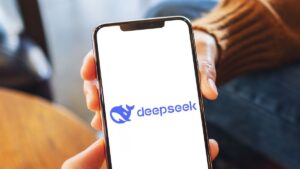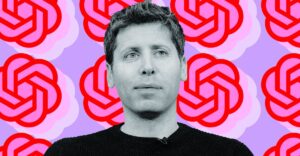ChatGPT’s Image Generator Unleashes Chaos at OpenAI

The Evolution of AI Image Generation
Introduction to ChatGPT’s Image Capabilities
OpenAI’s latest model, GPT-4o, has taken the world by storm with its innovative image generation features. This tool allows users to create stunning visuals from simple text prompts, leading to a surge in creative content online. From whimsical Barbie dolls to enchanting visuals reminiscent of Studio Ghibli films, the capabilities of this AI have struck a chord with millions of users.
A Playground for Visual Creativity
Key Features of GPT-4o
The image generation tool embedded in GPT-4o offers a variety of exciting functions. Some of its standout features include:
- Styling Photos: Users can transform their images into scenes inspired by popular shows like The Simpsons, South Park, and Rick and Morty.
- Complex Image Creation: The tool supports the creation of images featuring up to 20 different objects, allowing for intricate and detailed visuals.
Trending Creations
The AI Barbie trend has become a cultural phenomenon, with individuals turning themselves into playful action figures, complete with imaginative accessories and packaging designs. Even notable public figures, like U.S. Representative Marjorie Taylor Greene, joined this trend by sharing her themed creation on social media.
The concept of "Ghiblification" also gained traction, wherein users transform ordinary photos into soft, pastel-toned artworks inspired by Studio Ghibli masterpieces such as Spirited Away and Howl’s Moving Castle. This technique has been applied to a range of subjects, from global leaders to viral internet memes, showcasing the versatility of the tool.
User Experience and Demand
Growth in Popularity
With the launch of the image generation tool, the user base for ChatGPT skyrocketed, surpassing 150 million users. This unprecedented demand led to challenges for OpenAI’s infrastructure. Sam Altman, the CEO of OpenAI, humorously addressed the situation by urging users to "chill" on image generation, highlighting the overwhelming usage and the strain it placed on their systems. On social media, he mentioned, “Our GPUs are melting.”
Challenges Faced
By early April 2025, OpenAI personnel were faced with various hurdles, including service slowdowns, broken features, and delayed responses. Altman openly recognized the intense surge in demand for the image generation feature and assured users that solutions were on the way to enhance their experience.
Environmental and Ethical Considerations
Energy Consumption
The infrastructure that powers ChatGPT and its image generation tool is substantial. According to the International Energy Agency, the training of GPT-4 consumed an astonishing 42 gigawatt-hours of electricity. To put this into perspective, this amount of energy is sufficient to power about 28,500 homes in developed nations for a single day. This reality raises questions about the environmental impact of such powerful AI models.
Ethical Concerns
The rise of AI-generated art has not come without its controversies. Notable figures like Hayao Miyazaki, co-founder of Studio Ghibli, have expressed strong disapproval of AI-generated artwork, labeling it as "utterly disgusting." Artists, such as Karla Ortiz, have voiced concerns that their unique styles are being replicated without consent. While legal experts suggest that artistic styles themselves might not be copyrightable, they warn that certain distinctive visual elements might indeed violate copyright laws.
OpenAI’s Stance
In response to these concerns, OpenAI claims to take a conservative approach regarding image generation. They implement restrictions to prevent the creation of images in the style of living artists while allowing for broader studios’ aesthetics to be used. Despite these efforts, the overwhelming popularity of Barbie and Ghibli-inspired creations reveals a fundamental tension between the power of AI in fostering creativity and its potential to disrupt established artistic industries.
As OpenAI works to enhance its policies and support systems, the rise of AI-generated visuals signifies a notable shift in the landscape of digital creativity.






